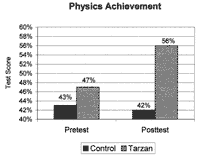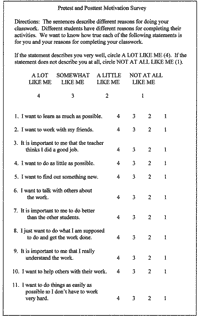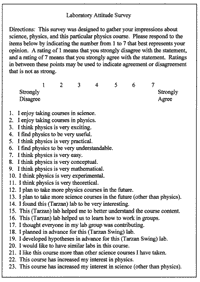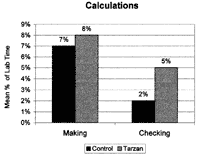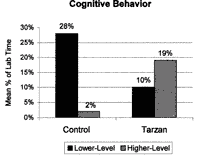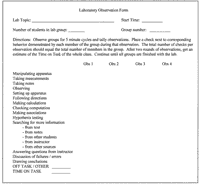| Acknowledgements |
| Educational Evaluation |
| How to Build |
| Snapshots |
| Student Materials |
| Teaching Materials |
| Tarzan Swing Home |
| Subjects: The participants were all students
at the York Campus of The Pennsylvania State University enrolled in an
introductory college physics class for people majoring in sciences or engineering.
The 16 subjects in the control group (conventional labs) took the class
during the fall semester 1996. The 17 subjects in the experimental
group (Tarzan Swing labs) enrolled during the spring semester 1997.
The courses were taught by two different instructors, in the fall by an
assistant professor and in the spring by an instructor.
The evaluation consisted of the following:
2) Attitude and motivational testing mechanisms (shown below) where administered to both groups before and after the relevant lab instruction. Surprisingly, this part of the study showed no significant differences between the groups. However, the trained observer noted increased excitement and motivation in the Tarzan Swing group. She noted that it is possible that the testing mechanisms used for this part of the study did not provide accurate feedback. The testing mechanisms used are shown below. 3) A trained observer attended the control group labs and the Tarzan Swing group labs. The observer carefully observed and recorded the time student groups spent on various tasks during the lab. The Laboratory Observation Form is shown below. Interesting aspects of this part of the study are shown in the Calculations graph and Cognitive Behavior graph below. Limitations: There are some significant limitations to this study, and at best it should be seen as a small evaluation of an innovative instructional process. First, the very small sample size limits generalizability and hinders the ability to detect differences. Second, there were only two instructors involved, again limiting generalizability of these results to other instructors with other populations of students. Also, the instructor was confounded with treatment (one instructor did one kind of lab and the other instructor did the other lab), so it is impossible to disentangle the impact of the instructor from the impact of the lab activity. Finally, this evaluation only looked at a small number of laboratory activities, so it is hard to make conclusions to other content from this evaluation. |
Please mail any comments to Karl P. Trout
